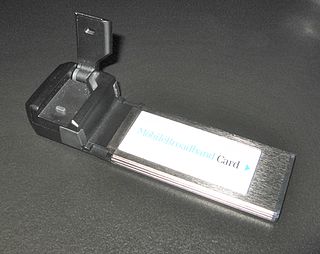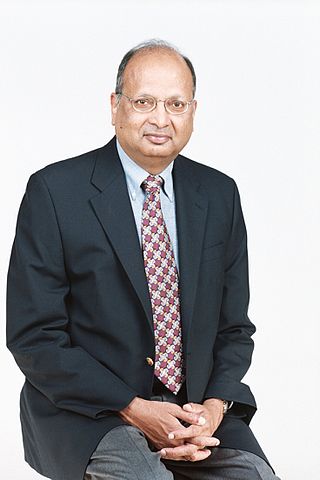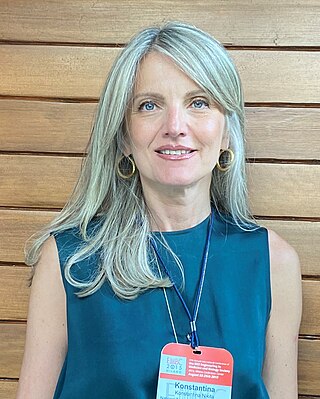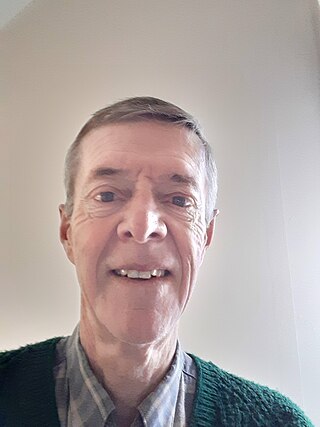
Wireless communication is the transfer of information (telecommunication) between two or more points without the use of an electrical conductor, optical fiber or other continuous guided medium for the transfer. The most common wireless technologies use radio waves. With radio waves, intended distances can be short, such as a few meters for Bluetooth, or as far as millions of kilometers for deep-space radio communications. It encompasses various types of fixed, mobile, and portable applications, including two-way radios, cellular telephones, personal digital assistants (PDAs), and wireless networking. Other examples of applications of radio wireless technology include GPS units, garage door openers, wireless computer mouse, keyboards and headsets, headphones, radio receivers, satellite television, broadcast television and cordless telephones. Somewhat less common methods of achieving wireless communications involve other electromagnetic phenomena, such as light and magnetic or electric fields, or the use of sound.

Worldwide Interoperability for Microwave Access (WiMAX) is a family of wireless broadband communication standards based on the IEEE 802.16 set of standards, which provide physical layer (PHY) and media access control (MAC) options.

4G is the fourth generation of cellular network technology, succeeding 3G and designed to support all-IP communications and broadband services, enabling a variety of data-intensive applications. A 4G system must meet the performance requirements defined by the International Telecommunication Union (ITU) in IMT Advanced. 4G supports a range of applications, including enhanced mobile internet access, high-definition streaming, IP telephony, video conferencing, and the expansion of Internet of Things (IoT) applications.
Machine to machine (M2M) is direct communication between devices using any communications channel, including wired and wireless. Machine to machine communication can include industrial instrumentation, enabling a sensor or meter to communicate the information it records to application software that can use it. Such communication was originally accomplished by having a remote network of machines relay information back to a central hub for analysis, which would then be rerouted into a system like a personal computer.

Sierra Wireless is a Canadian multinational wireless communications equipment designer, manufacturer and services provider headquartered in Richmond, British Columbia, Canada. It also maintains offices and operations in the United States, Korea, Japan, Taiwan, India, France, Australia and New Zealand.

Mobile broadband is the marketing term for wireless Internet access via mobile (cell) networks. Access to the network can be made through a portable modem, wireless modem, or a tablet/smartphone or other mobile device. The first wireless Internet access became available in 1991 as part of the second generation (2G) of mobile phone technology. Higher speeds became available in 2001 and 2006 as part of the third (3G) and fourth (4G) generations. In 2011, 90% of the world's population lived in areas with 2G coverage, while 45% lived in areas with 2G and 3G coverage. Mobile broadband uses the spectrum of 225 MHz to 3700 MHz.

Arogyaswami J. Paulraj is an Indian-American electrical engineer, academic. He is a Professor Emeritus (Research) in the Department of Electrical Engineering at Stanford University.
Yang Xiao is a professor of computer science at the University of Alabama.

International Mobile Telecommunications-Advanced are the requirements issued by the ITU Radiocommunication Sector (ITU-R) of the International Telecommunication Union (ITU) in 2008 for what is marketed as 4G mobile phone and Internet access service.
Min Chen is a professor in the School of Computer Science and Technology at Huazhong University of Science and Technology (HUST). His research focuses on Big data, Internet of Things, Machine to Machine Communications, Body Area Networks, Body Sensor Networks, E-healthcare, Mobile Cloud Computing, Cloud-Assisted Mobile Computing, Ubiquitous Network and Services, Mobile Agent, and Multimedia Transmission over Wireless Network, etc. He has been an IEEE Senior Member since 2009.

Mobile technology is the technology used for cellular communication. Mobile technology has evolved rapidly over the past few years. Since the start of this millennium, a standard mobile device has gone from being no more than a simple two-way pager to being a mobile phone, GPS navigation device, an embedded web browser and instant messaging client, and a handheld gaming console. Many experts believe that the future of computer technology rests in mobile computing with wireless networking. Mobile computing by way of tablet computers is becoming more popular. Tablets are available on the 3G and 4G networks.

A body area network (BAN), also referred to as a wireless body area network (WBAN), a body sensor network (BSN) or a medical body area network (MBAN), is a wireless network of wearable computing devices. BAN devices may be embedded inside the body as implants or pills, may be surface-mounted on the body in a fixed position, or may be accompanied devices which humans can carry in different positions, such as in clothes pockets, by hand, or in various bags. Devices are becoming smaller, especially in body area networks. These networks include multiple small body sensor units (BSUs) and a single central unit (BCU). Despite this trend, decimeter sized smart devices still play an important role. They act as data hubs or gateways and provide a user interface for viewing and managing BAN applications on the spot. The development of WBAN technology started around 1995 around the idea of using wireless personal area network (WPAN) technologies to implement communications on, near, and around the human body. About six years later, the term "BAN" came to refer to systems where communication is entirely within, on, and in the immediate proximity of a human body. A WBAN system can use WPAN wireless technologies as gateways to reach longer ranges. Through gateway devices, it is possible to connect the wearable devices on the human body to the internet. This way, medical professionals can access patient data online using the internet independent of the patient location.

Chai Keong Toh is a Singaporean computer scientist, engineer, industry director, former VP/CTO and university professor. He is currently a Senior Fellow at the University of California Berkeley, USA. He was formerly Assistant Chief Executive of Infocomm Development Authority (IDA) Singapore. He has performed research on wireless ad hoc networks, mobile computing, Internet Protocols, and multimedia for over two decades. Toh's current research is focused on Internet-of-Things (IoT), architectures, platforms, and applications behind the development of smart cities.
IEEE Life Sciences is an initiative launched by IEEE to promote the advancement of life sciences and supporting technologies, and to provide expertise and resources to individuals and enterprises involved in the various disciplines falling under the life sciences umbrella. IEEE Life Sciences provides access to a range of resources, including professional conferences, continuing education courses, publications, and standards. It is based in Piscataway, New Jersey.
Dr. Hui Liu is a Chinese American professor and an entrepreneur in the field of wireless and satellite communications. He is a prolific researcher with more than 200 scholarly articles and 2 textbooks, and a creative innovator with 67 awarded patents in areas ranging from wireless systems, signal processing, satellite networks, to machine learning. He has more than 12,000 paper citations and an H-index of 56 as of 2018. Dr. Liu is also one of the principal designers of three industrial standards on cellular networks, terrestrial broadcasting, and satellite communications, respectively.
Fauzia Ahmad is an associate professor of electrical engineering at Temple University. Her research considers statistical signal processing and ultrasonic guided wave structural health monitoring. She serves as associate editor of the IEEE Transactions on Aerospace and Electronic Systems and Geoscience and Remote Sensing Society. She is a Fellow of the Institute of Electrical and Electronics Engineers and SPIE.

Zygmunt J. Haas is a professor and distinguished chair in computer science, University of Texas at Dallas (UTD) also the professor emeritus in electrical and computer engineering, Cornell University. His research interests include ad hoc networks, wireless networks, sensor networks, and zone routing protocols.

Konstantina "Nantia" Nikita is a Greek electrical and computer engineer and a professor at the School of Electrical and Computer Engineering at the National Technical University of Athens (NTUA), Greece. She is director of the Mobile Radiocommunications Lab and founder and director of the Biomedical Simulations and Imaging Lab, NTUA. Since 2015, she has been an Irene McCulloch Distinguished Adjunct Professor of Biomedical Engineering and Medicine at Keck School of Medicine and Viterbi School of Engineering, University of Southern California.

Ewart R Carson is a British chartered engineer, system scientist, author, and academic. He is a Professor Emeritus of Systems Science in the School of Science and Technology at City, University of London.

Yang Hao is a British Chinese electronic engineer, academic, and author most known for his research in wireless connectivity and metamaterials. He is the holder of the QinetiQ/Royal Academy of Engineering (RAE) Research Chair, and serves as the Director of both the EPSRC Research Centre on Future Wireless Connectivity and the EPSRC Centre for Transformation Optics and Metamaterials. He is also a Professor of Antennas and Electromagnetics, and Deputy Vice Principal for Strategic Research at Queen Mary University of London (QMUL). He is a Co-Founder and Director of AOTOMAT, and co-founded a satellite communication company called Isotropic Systems.












